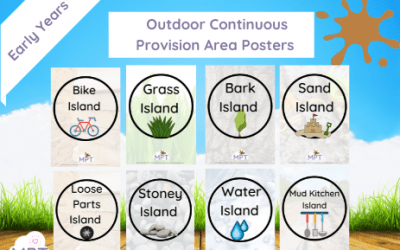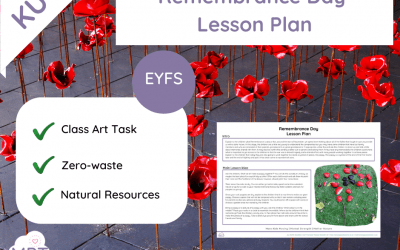10 Outdoor Ideas for VE Day – EYFS Celebrate VE Day the muddy way! This unique collection of 10 Outdoor Ideas for VE...
Outdoor Continuous Provision Plan for Early Years: Water Theme
Nov 8, 2024
Product Description: Outdoor Continuous Provision Plan for Early Years: Water Theme (MPT Approach) Bring the wonder of...
Dinosaur Continuous Provision Plan (Early Years Outdoors)
Nov 8, 2024
Product Description: Continuous Provision Plan for Early Years Outdoors: Dinosaur Theme (Muddy Puddle Teacher...
Fireworks Ideas for Toddlers
Nov 4, 2024
Fireworks Ideas for Toddlers Using the Muddy Puddle Teacher (MPT) Approach Make this Bonfire Night memorable and safe...
Nature Easter Eggs Template
Apr 7, 2022
Use Nature Easter Eggs to enhance your outdoor learning, find more outdoor learning resources under your year group...
Forest School Rules Poster
Mar 28, 2022
We make Forest Schools easier for you by doing all the work for you so you can make more of the FUN! Use this poster...
Muddy Kitchen (Themed Posters)
Mar 18, 2022
Try some of our resources for Free. Sign up to our free outdoor learning membership here.
Outdoor Continuous Provision Area Posters
Mar 18, 2022
Wow! Let us help you organise your outdoor area with these amazing downloadable posters. Laminate and display outside...
Children In Need : The Mad Cash Dash
Nov 17, 2021
Children In Need : The Mad Cash Dash This is a great event to also do as a whole school and add an element of...
Remembrance Day (Lesson Plan EYFS)
Nov 9, 2021
Remembrance Day (Lesson Plan EYFS) ⇒Use Remembrance Day (Lesson Plan EYFS) to take your children outside and allow...
Teddy Bears Picnic Ideas pack (Tots)
Apr 12, 2021
Use Teddy Bears Picnic Ideas pack for Tots to get this much-loved song and story outside the Muddy Puddles Way! EYFS...
EYFS Trolls
Jan 6, 2021
EYFS Trolls Use Trolls EYFS to take positive power outside loud and proud! Time to shine 🙂 Like our Muddy ideas?...
EYFS VE Day
Jan 6, 2021
EYFS VE Day VE Day Family Pack How will I receive the resource? Once you have proceeded to checkout it will be...
EY Easter Story
Jan 6, 2021
Early Years Easter Story In a nutshell: Taking the Easter Story outside may be just the inspiration you need to put an...
Early Years World Book Day
Jan 6, 2021
Early Years World Book Day In a nutshell: Use Muddy World Book Day Ideas pack to get activities and learning outside....
Gardening Therapy
Jan 6, 2021
Gardening Therapy Use Gardening Therapy to help the therapeutic magic of nature calm emotions and strengthen...
Nativity Ideas Pack (Take it Outside!)
Dec 9, 2020
Use Nativity ideas pack to use natural resources and take the learning of this area outside. There is something...
World Tiger Day EYFS (Ideas Pack)
Dec 7, 2020
World tiger day EYFS is a very important day to raise awareness of the beautiful animal that is the tiger. ...





























